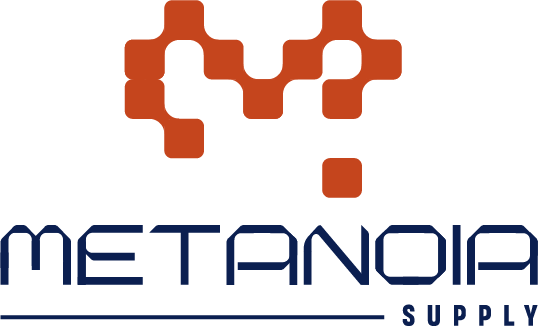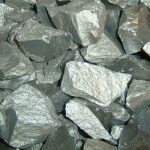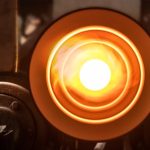Reframertiub and its applications
- articles
- Reframertiub and its applications

- admin
- August 3, 2020
- No Comments
Reformer tubes or reformer tubes, as their name suggests, are heat-resistant metal tubes that are used to produce hydrogen in steam reformer furnaces. Hydrogen production is used in industries such as steelmaking by direct reduction, oil desulfurization in refineries, methanol production, and ammonia synthesis for fertilizer production. Reformer tubes are basically made of pernickel-rich chromium superalloys.
The reaction factor in the tube reformer originates from the presence of nickel catalysts. A large amount of nickel catalysts are placed inside the reformer tubes. These catalysts accelerate the reaction of methane in natural gas with water vapor and as a result hydrogen, carbon monoxide and carbon dioxide are formed.
Reformers include 200 to 400 chrome-nickel steel tubes. The length of these pipes is 10 to 13 meters and their inner diameter is 75 to 140 mm. In fact, the length of the reformer cylinder is much greater than its diameter, and the ratio between the two increases numerically. The thickness of reformer tubes is between 11 and 18 mm. According to the working conditions of these pipes, one of the serious factors of destruction and breakage in them is the creep condition. We know that the working environment of these pipes usually has a temperature of 800 to 1000 degrees Celsius.
Below is the diagram showing the relationship between the rupture stress of reformer pipes with temperature and type of pipes. the common commercial super alloy grades for reformers include: IN519, HP 50, Hk 40, etc.
Reformer furnace
The chamber in which the tube reformer is placed is also called the reformer furnace. The reaction that takes place in this chamber is an endothermic reaction. This heat needed to carry out the reaction is provided by gas fuel. The purpose of the reformer can be: production of one of the reducing gases for processes such as direct reduction of steel, production of ammonia, methanol, etc.
In processes such as direct reduction of steel, it is necessary to produce the reduction gas needed in the reformer stage. In this step, natural gas methane reacts with water vapor 3 to 25 times and hydrogen and carbon monoxide and a relatively small amount of carbon dioxide are produced. The hydrogen produced from this reaction is also called blue hydrogen or gray hydrogen. It might not be bad to mention here that black or brown hydrogen is also called a type of hydrogen that is produced from coal. In general, the output product from the reformer is also called reformate.
The duty of the reformer
The industrial reformer is always responsible for the production of hydrogen from methane, and this process is carried out under high pressure and temperature by exposing methane to nickel catalyst. The chemistry of the reforming reaction is that in the chemical reaction performed in the reformer, the molecular structure of the hydrocarbon is re-formed and therefore its properties are changed. The cost of the reforming process is determined by the purity of the obtained hydrogen.
The reformer pipes used in the direct regeneration of steel must withstand a temperature of 1100 degrees. On the other hand, these pipes should last about ten years in the reformer chamber. Therefore, this type of tube reformer is usually made of high-nickel-high-chromium superalloys with a combination of 35 to 50% nickel, 30% chromium, and 5% tungsten.
Production method of tube reformer
Centrifugal casting method is used for tube reformer production. In this method, the molten metal is poured into a rotating cylindrical mold, and using centrifugal force, the molten metal takes the shape of a cylinder and the reformer tube is made. This type of casting produces high quality pipes.
Reformer goes through many production and inspection steps before selling to the customer. These steps include: centrifugal casting, cold press, shot blast, spot welding, dimensional visual inspection, smoothing machine, sample cutting, mechanical test, Hoof test, fluorescence test, drilling and turning, eddy current test, hydrostatic test. , radiography test, tungsten automatic welding, penetrating liquid test, beveling by CNC lathe, sandblasting, packaging, receiving certificate and sending to the buyer. Additional information about the reasons for using centrifugal casting in the production of reformer tubes is given at the end of this page.
The price of reformer tube
Reformer Tube pricing is usually based on common international currencies such as dollars. Major reformers are produced in China, France, Germany and Japan. Large steel production units consume about 400 reformer tubes every 5 to 10 years, the cost of which is about 8 million euros. But according to the events and changes in recent years in the cost of raw materials, the exact price is estimated only at the moment of purchase by customers.
Stresses on the tube reformer
Tube reformer tubes must work for long periods of time in corrosive conditions. Therefore, the quality of the materials used in making the reformer tube is very important. Tube reformer tubes are subjected to many stress factors:
- Ambient stress caused by gas pressure inside the furnace
- Axial stress caused by external gas pressure and weight
- Thermal conduction stress causes the temperature gradient of the pipe wall. This stress is mainly applied on the inner surface of the tube, which includes circumferential and radial stress
Mechanical and physical properties of tube reformer
Due to the high temperature and the presence of tension for long periods, the main mechanism of destruction in reformer tubes is definitely creep. Therefore, it is necessary for the pipes used in the reformer to have good high temperature mechanical properties. Below you can see the related mechanical properties table.
Another important thing in reformers is to have proper heat conduction. Because the reactions in the reformer are extremely endothermic and therefore the process of heating and heat transfer to the gas in the reformer must be done quickly
The reason for using centrifugal casting in reformer tubes
It was mentioned in the tube reformer production method that centrifugal casting is used for its production. But centrifugal casting has unique advantages that are mentioned below.
Advantages of centrifugal casting
- Directional freezing
- Free from holes and inclusions
- Another advantage of the centrifugal casting method is that the residual stress after casting is minimized because nothing can disturb the solidification shrinkage.
- Uniform thickness along the length of the pipe
- Metal quality in healthy casting
- Starting from the outer surface in contact with the metal mold
- The possibility of producing a significant number of cylindrical shaped components at a favorable speed
- Appropriate dimensional accuracy
- Reducing the use of muscles and creating a channel for casting
- Appropriate mechanical properties of the final piece
- Production of parts with very high corrosion resistance due to the good formation of granulation on the external surface of the part
- The possibility of casting metals with high specific weight
- Very simple operator due to the complete electronic control section
- High speed of freezing compared to other methods
- No pollution in the environment
The amount of thickness in centrifugal casting can be controlled with high precision.
It is good to know that even two-layer casting can be done in the same way, so that after finishing the construction of the first layer, they build the second layer on top of it in the same way as before.
The advantages of two-layer centrifugal casting pipes are as follows:
- The outer and inner layers of metallurgy are connected to a fully integrated structure.
- A wide choice of outer and inner layer compositions is available through complete control of the molten metal temperature and optimal configuration of casting conditions.
- Products can be designed with various features by changing the inner and outer layers.
What is inside the reformer tubes?
Inside the reformer tubes are filled with nickel catalysts to activate the reaction of methane with water to produce hydrogen, carbon monoxide and carbon dioxide. Mainly, the length of the reformer tubes is 12 to 14 meters and the process gas pressure is 25 to 40 bar.
What is creep in reformer tubes?
Creep occurs as a result of increased working temperature and stress. Creep conditions are always present in reformer tubes, and for this reason, creep is the main factor in determining the lifespan of reformers. In addition to the stress caused by high pressure, severe thermal stress is applied when starting the plant, blackouts and sudden interruptions.
What is a catalyst tube?
Tube catalyst is mainly known as tube reformer. These tubes are necessary for breaking steam and converting energy carriers including carbon into carbon monoxide and hydrogen. This process is carried out under high pressure, high temperature and in the presence of a catalyst.
What is the working process of steam-methane reforming?
In steam-methane reforming, these two gases react with each other under a pressure of 3-25 bar in the presence of a catalyst. The result of this reaction is the production of hydrogen, carbon monoxide and a small amount of carbon dioxide. Steam reforming is an endothermic reaction; Therefore, to continue the reaction, it is necessary to heat the reaction chamber.

Latest Articles
Sustainable supply chain
- 3 August 2020
- No Comments
Application of all kinds of ferroalloys
- 3 August 2020
- No Comments
Reframertiub and its applications
- 3 August 2020
- No Comments
Category Articles
Latest projects
Sustainable supply chain
- 3 August 2020
- No Comments
Application of all kinds of ferroalloys
- 3 August 2020
- No Comments
Reframertiub and its applications
- 3 August 2020
- No Comments




